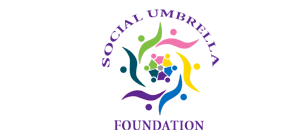Economic hardship exacts a toll on millions of families worldwide – and in some places, it comes at the price of a child’s safety. Roughly 160 million children were subjected to child labour at the beginning of 2020, with 9 million additional children at risk due to the impact of COVID-19.
This accounts for nearly 1 in 10 children worldwide. Almost half of them are in hazardous work that directly endangers their health and moral development.
Children may be driven into work for various reasons. Most often, child labour occurs when families face financial challenges or uncertainty – whether due to poverty, sudden illness of a caregiver, or job loss of a primary wage earner.
The consequences are staggering. Child labour can result in extreme bodily and mental harm, and even death. It can lead to slavery and sexual or economic exploitation. And in nearly every case, it cuts children off from schooling and health care, restricting their fundamental rights and threatening their futures.
Migrant and refugee children – many of whom have been uprooted by conflict, disaster or poverty – also risk being forced into work and even trafficked, especially if they are migrating alone or taking irregular routes with their families.
Trafficked children are often subjected to violence, abuse and other human rights violations. And some may be forced to break the law. For girls, the threat of sexual exploitation looms large, while boys may be exploited by armed forces or groups.
Children on the move risk being forced into work or even trafficked – subjected to violence, abuse and other human rights violations.
Whatever the cause, child labour compounds social inequality and discrimination, and robs girls and boys of their childhood. Unlike activities that help children develop, such as contributing to light housework or taking on a job during school holidays, child labour limits access to education and harms a child’s physical, mental and social growth. Especially for girls, the “triple burden” of school, work and household chores heightens their risk of falling behind, making them even more vulnerable to poverty and exclusion.
Key facts
- The number of children in child labour has risen to 160 million worldwide – an increase of 8.4 million children in the last four years – with 9 million additional children at risk due to the impact of COVID-19.
- Progress to end child labour has stalled for the first time in 20 years, reversing the previous downward trend that saw child labour fall by 94 million between 2000 and 2016.
- The incidence of hazardous work in countries affected by armed conflict is 50% higher than the global average.
- 30 million children live outside their country of birth, increasing their risk of being trafficked for sexual exploitation and other work.
UNICEF’s response

UNICEF works to prevent and respond to child labour, especially by strengthening the social service workforce. Social service workers play a key role in recognizing, preventing and managing risks that can lead to child labour. Our efforts develop and support the workforce to identify and respond to potential situations of child labour through case management and social protection services, including early identification, registration and interim rehabilitation and referral services.
We also focus on strengthening parenting and community education initiatives to address harmful social norms that perpetuate child labour, while partnering with national and local governments to prevent violence, exploitation and abuse.
With the International Labour Organization (ILO), we help to collect data that make child labour visible to decision makers. These efforts complement our work to strengthen birth registration systems, ensuring that all children possess birth certificates that prove they are under the legal age to work.
Children removed from labour must also be safely returned to school or training. UNICEF supports increased access to quality education and provides comprehensive social services to keep children protected and with their families.
To address child trafficking, we work with United Nations partners and the European Union on initiatives that reach 13 countries across Africa, Asia, Eastern Europe and Latin America

Comments are closed.